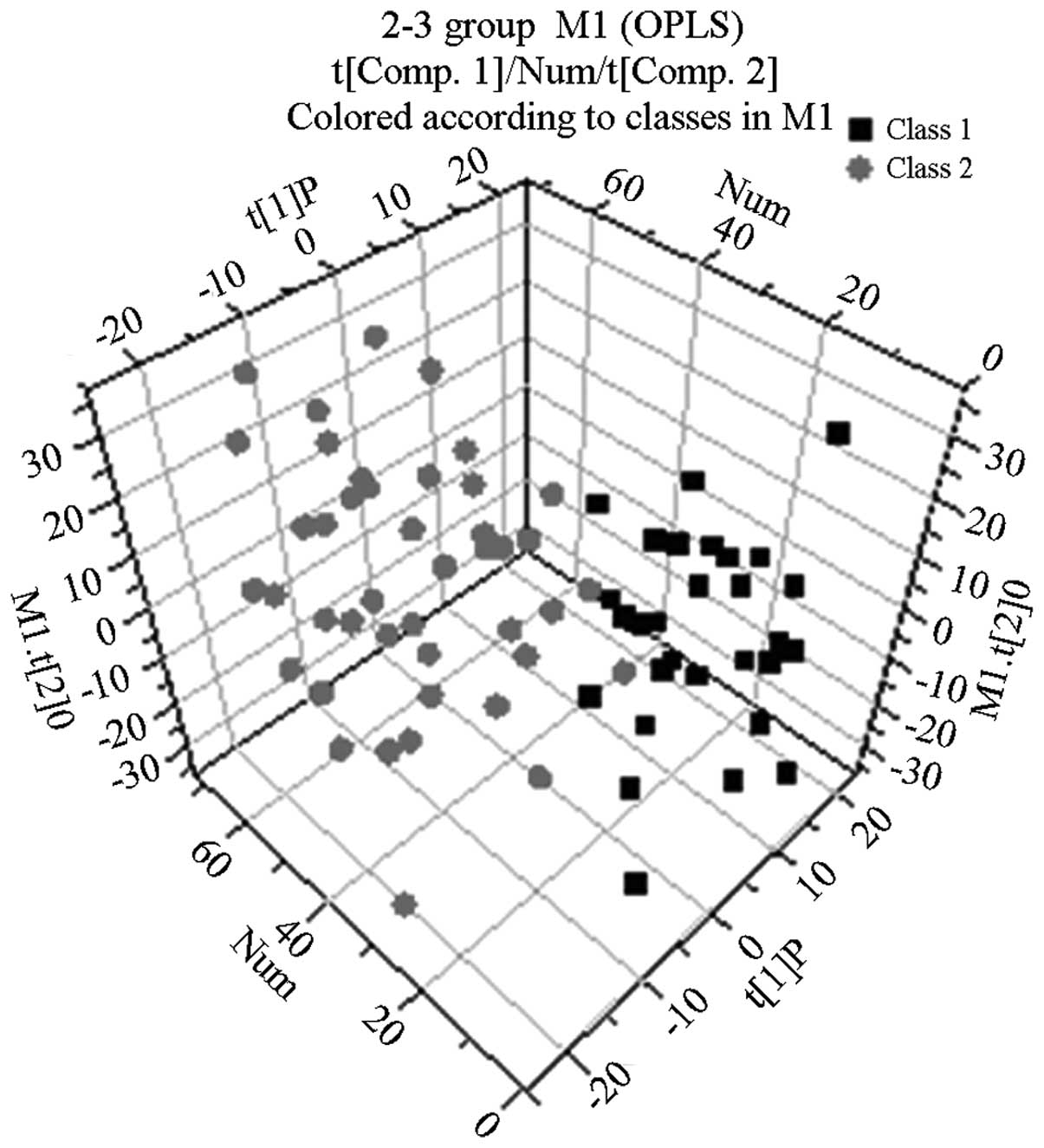Metabolomic changes in patients with chronic obstructive pulmonary disease with abnormal Savda syndrome
- Authors:
- Published online on: November 24, 2014 https://doi.org/10.3892/etm.2014.2085
- Pages: 425-431
Metrics: Total
Views: 0 (Spandidos Publications: | PMC Statistics: )
Total PDF Downloads: 0 (Spandidos Publications: | PMC Statistics: )
Abstract
The aim of this study was to determine the metabolic biomarkers for abnormal Savda syndrome in patients with chronic obstructive pulmonary disease (COPD). Based on Traditional Uyghur Medicine (TUM) theory, a total of 103 patients with COPD were classified into abnormal Savda and non‑abnormal Savda syndrome groups and 52 healthy volunteers acted as the control group. Blood samples from the three groups were analyzed using nuclear magnetic resonance (NMR) spectroscopy combined with orthogonal projection to latent structure‑discriminant analysis. NMR tests showed that the regional distributions of the patients with COPD with abnormal Savda syndrome, those with non‑abnormal Savda syndrome and the control group were completely separate (P>0.05). The patients with COPD with abnormal Savda syndrome exhibited relatively low levels of amino acids, glycoproteins and unsaturated lipids (P<0.05) but significantly higher levels of lactic acid, carnitine, acetone and acetoacetate (P<0.05) compared with the healthy controls. Abnormal Savda syndrome was one of the main types of syndrome among the patients with COPD; increased age, a longer duration of illness and a higher disease severity were characteristic of this type of syndrome. In addition, the present study provided biochemical evidence for the TUM theory‑based classification of patients with COPD; these biomarkers can be used in the clinic for the diagnosis of COPD with abnormal Savda syndrome. The study also demonstrated that the plasma metabolic disorder in patients with COPD with abnormal Savda syndrome was more serious than that in the control and COPD with non‑abnormal Savda syndrome groups. The plasma metabolic disorder was also associated with a low immune function of the body and endocrine and energy metabolism disorders.













